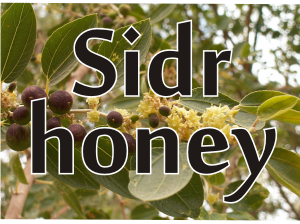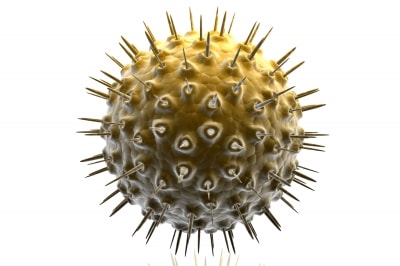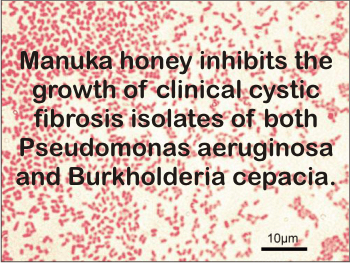Is manuka honey better the other honeys? In some fields, yes. Is manuka the best natural treatment for MRSA? Yes. But this doesn’t mean it is the best honey in everything.
This would be a very simplistic way of considering things. Manuka is a very good honey, yet not a panacea, it cannot be considered good for all the diseases in the world. So, no, it is not better than the other honeys, but different.
Generally, honey is antibacterial, anti-inflammatory, wound and sunburn healing, antioxidant, radical scavenging, antidiabetic and antimicrobial activities. Manuka honey is the best only when talking about its antimicrobial activity.
It is better in one field, but not that valuable in other fields. Which is why it is important that we know what it can treat, or prevent, and how to take it.
Manuka honey is the best antibiotic honey.
Some people say that. Other people say “almost”. Recent studies have shown that its antibiotic activity is very similar to other dark honeys: blueberry, buckwheat, chestnut, cotton, fire-weed, heather, jarrah, honeydew, linen vine, red gum, revamil, tualang, ulmo, sourwood, gelam. (according to Stefan Bogdanov, founder of the International Honey Commission, Muhlethurnen – PhD, Switzerland)
Nevertheless, all scientists considered it to have the highest and broadest antibacterial activity. Almost. You will see why almost.
What makes it different?
A different compound found in it, called MGO = methylglyoxal. Not that this compound is completely lacking from the other honeys, but the MGO content in manuka honey is 1,000 times higher (according to Professor Thomas Henle, Head of the Institute of Food Chemistry at the Technical University of Dresden, 2008).
This MGO is a 2-edged sword. While a very powerful antibiotic, MGO is highly toxic to the cells of the body. Some scientists say this is not true, because after ingestion, the MGO is completely turned into lactic acid in the small and large intestine, manuka honey being stable only in the mouth, throat and stomach.
This leads to the conclusion that the action of MGO in our body is limited to bacteria found only in these organs, and does not act on the rest of the body. On the other hand, when applied on the skin, only a very small quantity of MGO will enter the body, as the problem is solved locally, at the skin level.
What gives a honey its antibiotic properties?
Any type of honey has 4 major antibacterial properties:
1. Acidity
2. Hydrogen peroxide activity
3. High osmotic effect
4. Phytochemical components (according to Molan 1992; Cooper et al., 2002; Al-Waili et al., 2011).
Manuka honey has another one:
5. MGO – which is considered non-hydrogen peroxide activity.
See details in What gives honey its antimicrobial power?
BUT, not all manuka honey has MGO. And when it does, the real amount of it is very hard to determine.
Only some types of Leptospermum species give MGO, the concentrations can vary from batch to batch and year to year, and, while in the nicely labeled jar, the concentration of it will increase in time. (!)
It’s like in fact we cannot control its amount.
All the studies already made are relative. Probably the reason for which in some of them the results are very good and in some they are very bad.
Read more on why honey has a remarkable antibiotic activity: How to kill antibiotic resistant bacteria!
What bacteria can manuka honey kill?
Our literature gives us a long list of bacteria that can be killed with manuka honey. But the studies (in a lab environment) tell things differently. For example:
MSSA (Methicillin Susceptible Staphylococcus Aureus) was killed
100% – on a single bacteria.
BUT ONLY 82% – on biofilms (which was more than the action of Sidr honey, which had 63%)
MRSA (Methicillin Resistant Staphylococcus Aureus) was killed:
100% – on a single bacteria.
BUT ONLY 63% – on biofilms (less than with Sidr honey, which had 73%)
Pseudomonas Aeruginosa was killed:
100% – on a single bacteria.
BUT ONLY 91% – on biofilms (equal to Sidr honey) (no synthetic antibiotics reached this number!)
Helicobacter pylori, the bacterium known to cause many stomach ulcers and duodenal ulcers, was killed in vitro, but failed in clinical trials, as proved by the clinical trials in New Zealand, and subsequently in UK.
Streptococcus pyogenes, a virus that causes sore throats, and Escherichia coli (E. Coli) – known to cause serious food poisoning, had a high rate of succes in vitro, but not yet any clinical trial has been published to confirm it.
Clostridium difficile, an important nosocomial pathogen. Maximum zone of inhibition was observed at 50% (v/v) Manuka honey and the growth inhibition persisted over 7 days. It had a bactericidal effect.
C. difficile is appreciably susceptible to Manuka honey and this may offer an effective way of treating infections caused by the organism.
Further reading: “Bacterial Cause of Chronic Sinusitis Eradicated by Honey”, by researches of the University of Ottawa, publishing in December 2008 by HospiMedica International.
Compared to Malaysian Gelam honey:
Studies conducted on five strains of Staphylococcus aureus, using six different concentrations of honey: 0%, 20%, 40%, 60%, 80% and 100%, shown that on established biofilm inhibition assay, Manuka honey UMF 10 was the most potent with the highest reduction percentage (85.04%).
On a study on Enterococcus spp, it was found that Manuka honey UMF 15 was the most effective in reducing established biofilm biomass as compared to Malaysian Gelam honey.
Nevertheless, Malaysian Gelam honey was found to be effective in preventing biofilm formation of Enterococcus spp. as compared to Manuka honey. In brief, Malaysian Gelam honey is better in preventing Enterococcal biofilm fomation whereas Manuka honey is better at treating it.
Compared to Malaysisan Tualang honey:
Tualang honey has antimicrobial, anti-inflammatory, antioxidant, antimutagenic, antitumor, and antidiabetic properties, in addition to wound-healing attributes. Some of these properties are similar to those of Manuka’s, but there are distinct differences like: higher phenolics, flavonoids, and 5-(hydroxymethyl) furfural (HMF).
Compared to Manuka honey, Tualang honey is more effective against some gram-negative bacterial strains in burn wounds. It is useful as a dressing, as it is easier to apply and is less sticky compared to Manuka honey. However, for Gram positive bacteria, tualang honey is not as effective as usual care products such as silver-based dressing or medical grade honey dressing. (according to a 2010 study “Antibacterial properties of tualang honey and its effect in burn wound management: a comparative study.” by Nasir NA et al.)
Compared to manuka honey, tualang honey has other properties which makes it an exceptional honey. It is antidiabetic and has a more powerful antioxidant activity, due to different constituents.
Compared to Sidr honey:
On a biofilm strain, Sidr honey was more efficient in killing MRSA. (see the study Effectiveness of honey on Staphylococcus aureus and Pseudomonas aeruginosa biofilms.)
What is Medical Grade Honey, Revamil® and Medihoney™?
They all refer to Manuka honey, which is a type of honey made by Apis Mellifera honey bees, from Leptospermum species of trees, especially from Leptospermum scoparium and/or Leptospermum polygalifolium. There are many manufacturers that make medical grade honey.
When is manuka honey qualified as “medical grade”?
When the honey conforms to the rigorous standards of quality and consistency. The honey coming from various hives is tested for microbiological contamination and assayed for water content and phytochemical composition. After it is fully characterized, it is filtered and blended into a master batch with the purity and consistency to qualify for use in a moist wound environment. It will follow a gamma irradiation, in a process that will destroy any residual microbial spores (including possible Clostridium spp spores, making it suitable even for infants) without degrading the effectiveness of the honey.
Yes, we can give medical grade honey to our infants.
• Medical Grade Manuka Honey is produced by Manuka Health New Zealand Ltd (MHNZ), which is a manufacturer of a wide range of high quality functional foods, dietary supplements, wound care and personal care products, utilizing natural bioactive compounds unique to New Zealand native fauna and flora.
From its products:
– Wound Dressing with Manuka Honey
– Manuka Honey Wound Gel
– Breast Pads with Manuka Honey
Here is a list of Case Studies that shown the good results obtained using Medical Grade Manuka Honey as wound dressing.
• Revamil. It’s a CE-marked, standardized medical grade honey produced by Bfactory Health Products BV, a company specialized in developing medical products with superior honey.
It’s a topical antimicrobial agent for prevention or treatment of infections, including those caused by multidrug-resistant bacteria. It is produced by bees in closed greenhouses.
Here is a study showing its efficiency. You can find the product online, even on Amazon: Revamil Honey Balm Wound Ointment 15g.
Among their products:
– Revamil ®gel, 18 gr
– Revamil ® wound dressing
– Revamil ® Single Dose (gel)
– Revamil ® Balm
• Medihoney is produced by Derma Sciences, Inc., Toronto, Ontario M1S 3S4, Canada. Derma Sciences has two manufacturing facilities, one in Toronto, Canada, and one in China, along with other contracts for manufacturing services for OEM and private label products.
It is the global leading brand of wound care dressings made with Active Leptospermum Honey. An ideal solution for the management of hard to heal wounds and burns.
It was cleared by the Food and Drug Administration for use on traumatic wounds, diabetic ulcers, and second-degree burns against normal skin flora but not necessarily against multidrug-resistant organisms (MDROs) infecting these wounds or its associated recovery and healing rate.
Here are some products available online: MEDIHONEY Wound Dressings, Medihoney Hydcol Pste 1.5 oz, (1 EACH, 1 EACH) which can be used for wound bed preparation and throughout all phases of wound healing.
• Medihoney dressings – the best wound care dressing products;
• Medihoney wound dressing review
Is there a honey better than manuka honey?
It seems there is. Maharishi honey. A special Indian polifloral honey, produced under Ayurvedic protocols, used in traditional Indian medicine. This type of honey has entered the market a lot lately, and has been widely recognized by well-known research labs around the world, as having a higher antimicrobial activity, even compared to manuka honey.
And, of course, there will always be others saying jarrah honey is better. Experience talks for everyone. And taste.
Conclusion:
• Manuka honey is the best antibiotic honey for skin conditions. At least in the West. But this activity is not yet proven for killing internal bugs. By now, for mouth and ENT (ear, nose, throat), it is the best in killing Pseudomonas Aeruginosa, MSSA, Streptococcus pyogenes. For the stomach, Helicobacter pylori was killed in vitro, but not in clinical trials. In wound treatment, manuka honey proved to be more efficient only on gram-positive bacteria. Studies are ongoing.
• Manuka honey varies with every jar. No label on it can tell the actual content of MGO, as its concentration increases in time, while the other components commonly found in a honey, decrease in time. A high concentration of MGO does not necessarily makes it the best antibiotic.
• Maharishi honey is considered to have a more powerful antimicrobial and antioxidant activity than Manuka Honey up to UMF 30 Active.
——
Further reading:
Deciphering manuka honey: UMF15+, MGO400, 24+ Bio Active, KFactor16, TA. And LOTS OF FRAUDS.
I want to buy manuka honey. What is UMF 16+, MGO 400+, Active?
What kills Staphylococcus aureus? Does manuka honey kill MRSA?
The celebration of manuka honey. Is MGO700 better than MGO300? Is manuka honey toxic?
How is manuka honey tested? Can we trust those tests?
A new dispute on manuka honey market: Is it toxic or not?
References:
http://www.alkalizeforhealth.net/Lmaharishihoney.htm
http://www.ncbi.nlm.nih.gov/pmc/articles/PMC2686636/#B23
http://www.pubfacts.com/detail/23651562/Antibacterial-effect-of-Manuka-honey-on-Clostridium-difficile.
http://en.wikipedia.org/wiki/M%C4%81nuka_honey








